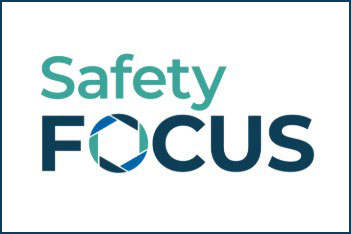

As an OSH professional, part of your job is to create a health and safety plan for your company. With so many stakeholders - employees, mid-level managers, company leadership—this may seem like quite a challenge.
Developing a plan isn't just about complying with safety standards. A safety plan is a document that outlines your company's values and beliefs about safety.
Even if a company isn’t legally obligated to create a policy, having one signals that your company cares about your employees’ well-being.
Developing a plan is also a step toward creating a safety culture in your workplace. Research shows that creating a positive culture around workplace safety reduces injuries and increases productivity.
So, let’s review the steps of creating a company health and safety plan.
The first step is to create a plan to identify the hazards and risks your employees face. Common hazards include:
To identify hazards and risks, review past incidents to identify injury patterns that can reveal risks.
Thoroughly review the workplace to identify risks and hazards.
You can also interview employees, review equipment manuals and contact trade associations for further insight.
Also, be sure to survey your organization's leadership. Asking these eight questions is a great way to engage them in this process.
Doing this early on involves leaders in the process and can help solidify their commitment to improving workplace safety. This is critical to creating a safe workplace culture.
After gathering information from the risk assessment, start outlining the health and safety plan.
Start with the required elements. What are the state and federal requirements? What about requirements from insurance carriers and workers’ compensation?
OSHA hosts a database of industry-specific laws and regulations that will make research much easier.
The database also addresses federal regulations regarding hazardous materials such as oxygen, hydrogen and flammable liquids.
As a starting point, the general structure of the written plan should at address the legal requirements already described.
To extend the plan to creating a safety culture, your plan should include these elements.
What does your organization want to accomplish by having this plan? This part of the written plan is an excellent opportunity to demonstrate the company's commitment to creating a safe and productive work environment.
In the budget, include equipment replacement costs, injury costs, employee incentives, and meeting or training costs. Be sure to include costs for workers’ salaries during the training, and any food and beverage costs.
In the budget, also note whether the company needs additional hires to implement the policy or costs related to the safety committee.
A sound company safety plan identifies who is responsible for what actions and explains how those people will be held accountable.
The more specific the plan, the less room there is to misinterpret the policy.
The safety plan should document step-by-step what happens in case of an emergency. It should detail who is responsible for writing incident reports and conducting incident investigations.
Be sure to give special considerations to how the company might remedy the situation so it doesn't happen again.
Develop a training schedule for current employees, new employees and transfers. This schedule should include training related to new equipment, and ongoing training to review specific policies and procedures.
State how often the company will review and potentially revise its health and safety plan. Indicate who is responsible for review and revision.
Implementation is the most important part of the written plan.
A company’s health and safety plan should document how and when employees will be trained. What's the training schedule? How will new hires be trained?
It should also explain training procedure that apply if an employee transfers between departments.
The plan must also show which positions are responsible for what. For example, who is responsible for visiting job sites or conducting inspections to ensure compliance? How often will inspections occur? How will employees be incentivized or disciplined? What happens when an employee violates the policy two times, three times, four times? What is the process to document violations and retrain employees? At what point does violating the policy result in termination?
These are just some questions to consider when writing your health and safety plan.
One way to implement the plan is to start a safety committee.
Besides sending the message that your organization takes safety seriously, forming a committee creates an opportunity to bring stakeholders together to discuss and address prevailing concerns.
It also ensures that the health and safety plan is a living document that does not simply sit on the shelf until an emergency occurs.
Finally, the plan may reveal opportunities for improvements, so it is important to define how and when will they be handled. For example, if several injuries are related to installing flooring, how and when will that issue be remedied?
Writing a health and safety plan can be the first step in creating a workplace safety culture.
Your policy must have the buy-in from leadership and employees alike, and it must reflect the company's attitudes and beliefs around workplace safety.
That's not an easy task.
To craft a strong policy, check out our course on technical writing for the safety professional. It's designed to help you produce clear, concise writing that you can apply to your organization’s health and safety plan, as well as any document you create as part of your job.